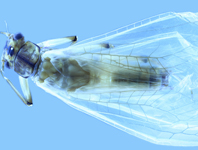Abstract
Among numerous ascidians, two colonies of the deep species Protoholozoa pedunculata Kott, 1969 were collected in 2017 by the French Poker 4 survey, Indian Ocean. The larvae of this species are described here for the first time. The present material shows the disposition of adhesive papillae in a line and incubation in the atrial cavity. That is different from what was first reported and from what is known in other species of the genus, which show triradiate adhesive papillae and incubation in a brood pouch. This new data leads us to discuss the taxonomic status of different species, leaving Protoholozoa Kott, 1969 for the previous ones and creating Scotiazoa gen. nov. for species with triradiate larval papillae and brood pouch.
References
Berrill, N.J. (1950) The Tunicata with an account of the British species. Ray Society, London, 354 pp.
Kott, P. (1969) Antarctic Ascidiacea. Antarctic Research Series, 13, 1–239.
Kott, P. (1971) Antarctic Ascidiacea II. Antarctic Research Series, 17, 11–82.
https://doi.org/10.1029/AR017p0011
Kott, P. (1990) The Australian Ascidiacea, part 2, Aplousobranchia (1).Memoirs of the Queensland Museum, 29 (1), 1–226.
Kott, P. (1992) The Australian Ascidiacea, supplement 2. Memoirs of the Queensland Museum, 32 (2), 621–655.
Kott, P. (2005) Catalogue of Tunicata in Australian waters. Commonwealth of Australia, Canberra, 301 pp.
Monniot, C. & Monniot, F. (1985) Nouvelles récoltes de tuniciers benthiques profonds dans l’Océan Atlantique. Bulletin du Muséum National d’Histoire Naturelle Paris, Series 4, Section A, No. 1, 5–37.
Monniot, C. & Monniot, F. (1982) Some antarctic deep-sea tunicates in the Smithsonian collections. In Biology of the Antarctic seas X. Antarctic Research Series, 32, 95–130.
https://doi.org/10.1029/AR032p0095
Monniot, C. & Monniot, F. (1983) Ascidies antarctiques et subantarctiques: morphologie et biogéographie. Mémoires du Muséum National d’Histoire Naturelle, Paris, 125, 1–168.
Monniot, C. & Monniot, F. (1991). Tunicata: Peuplements d’ascidies profondes en Nouvelle-Calédonie. Diversité des stratégies adaptatives. In: A. Crosnier (Ed). Résultats des Campagnes MUSORSTOM, Vol. 8, Mémoires du Muséum National d’Histoire Naturelle (A), 151. Paris, 357–448.
Monniot, F. (1974) Ascidies littorales et bathyales récoltées au cours de la campagne Biaçores: Aplousobranches. Bulletin du Muséum National d’Histoire Naturelle, Paris, Series 3, 251 (173), 1287–1325.
Rocha, R.M., Bastos Zanata, T. & Moreno, T.R (2012) Keys for the identification of families and genera of Atlantic shallow-water ascidians. Biota Neotropical,12 (1), 269–303.
https://doi.org/10.1590/S1676-06032012000100022
Sanamyan, K.E. & Sanamyan, N.P. (2002) Deepwater ascidians from the South-Western Atlantic (RV Dmitry Mendeleev, cruise 43 and Academic Kurtchatov cruise 11). Journal of Natural History, 36, 305–359.
https://doi.org/10.1080/00222930010004232
Tatián, M., Antacli, J.C. & Sahade, R., (2005) Ascidians (Tunicata, Ascidiacea): species distribution along the Scotia Arc. Scientia Marina, 69 (supplement 2), 205–214.
https://doi.org/10.3989/scimar.2005.69s2205

